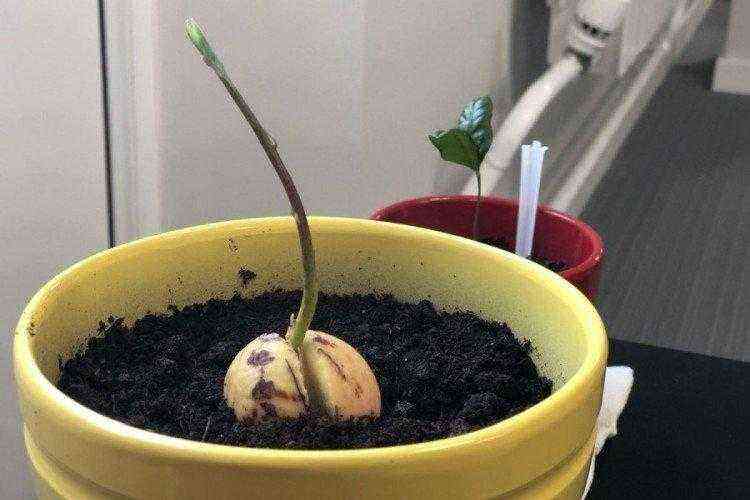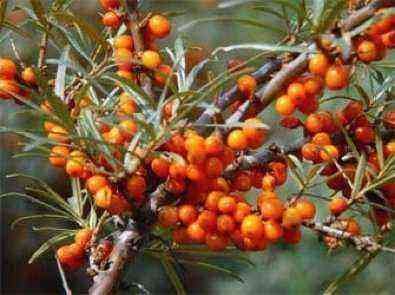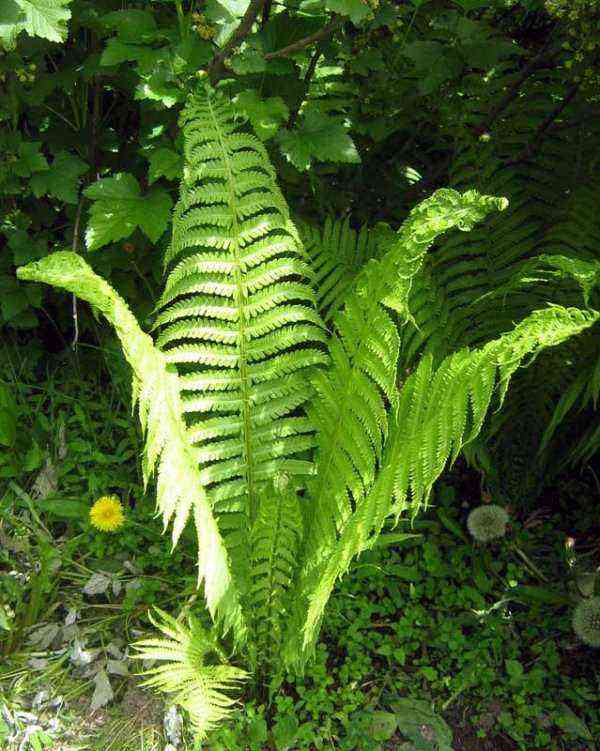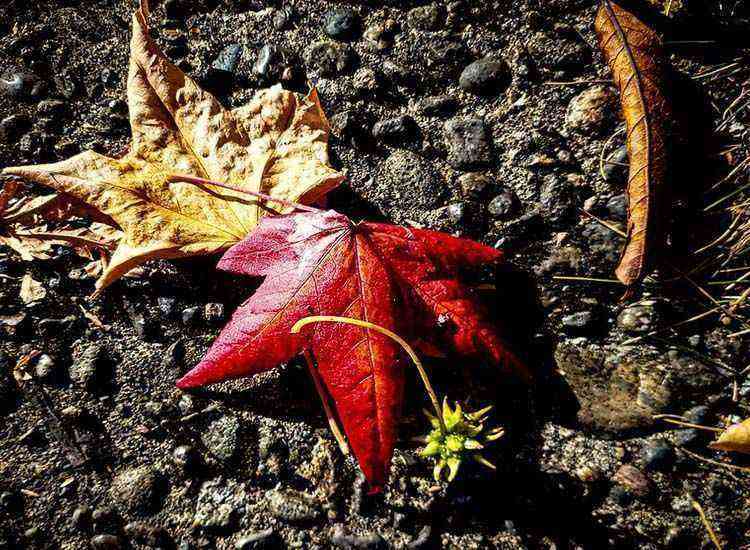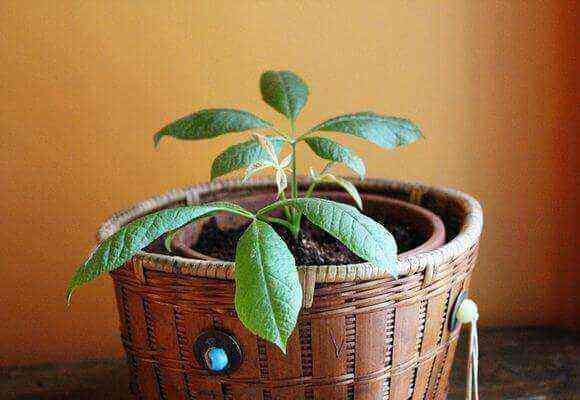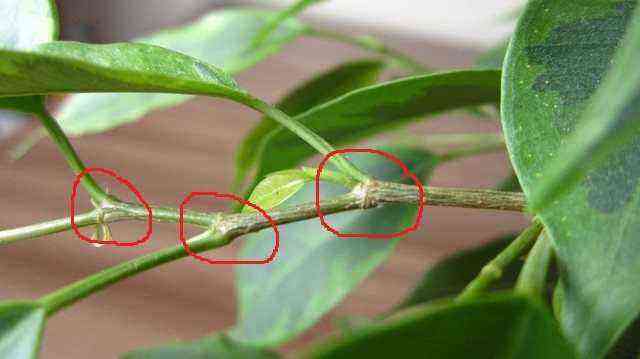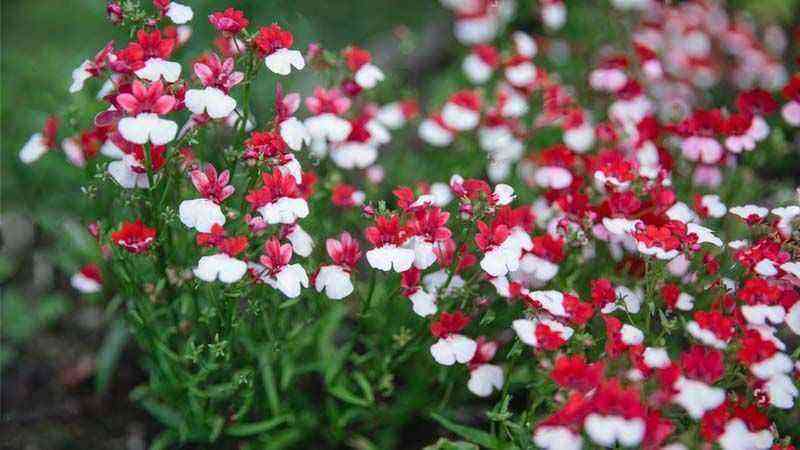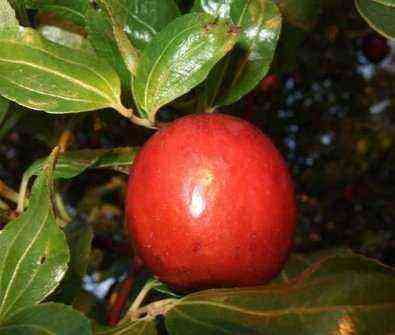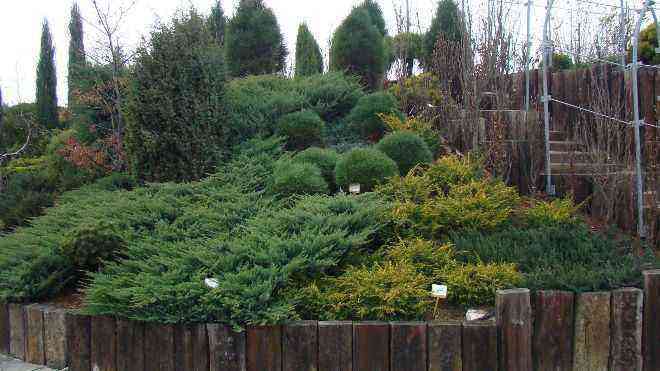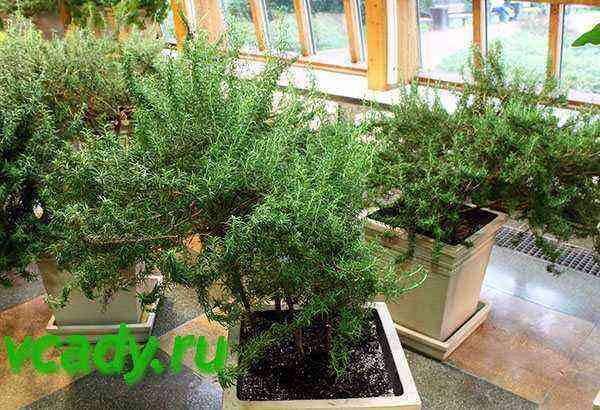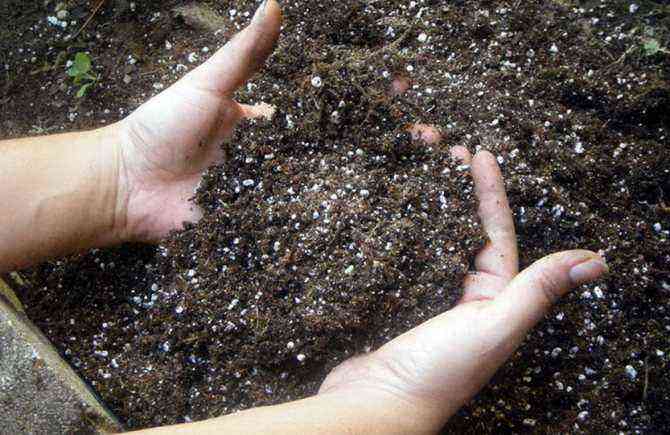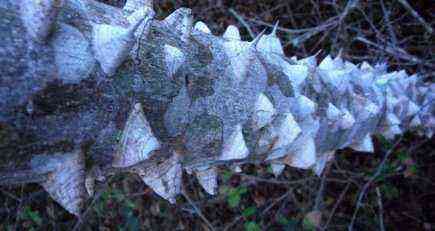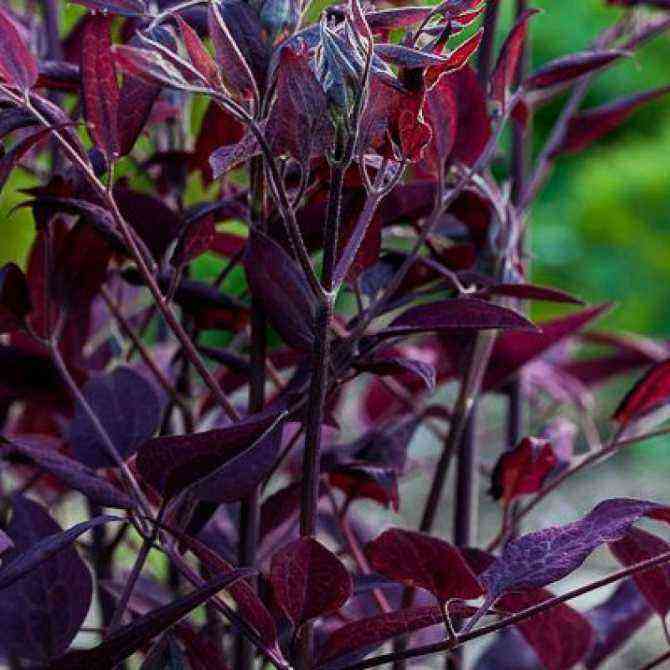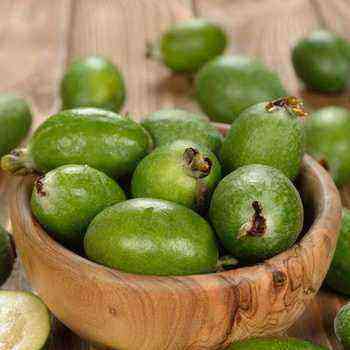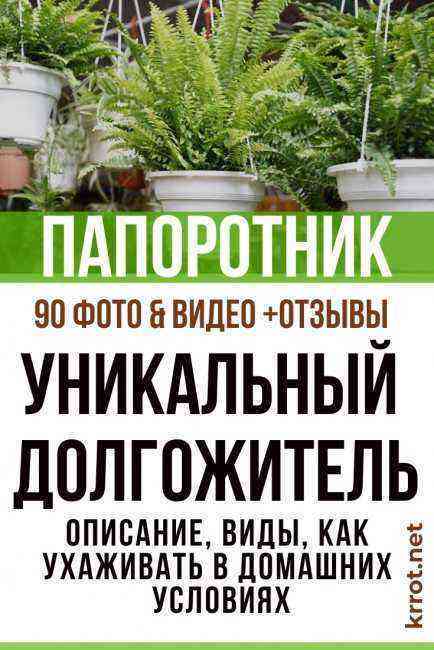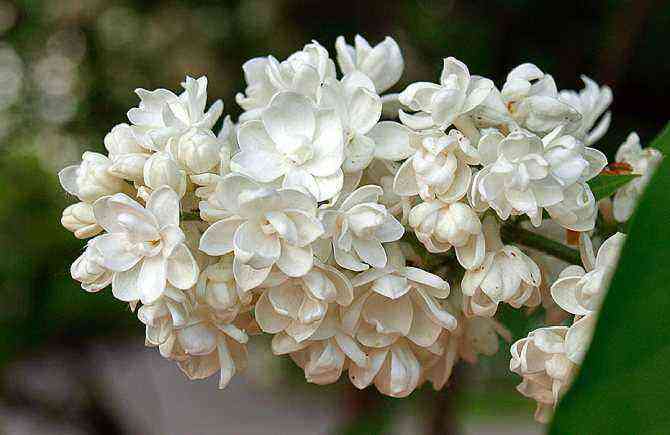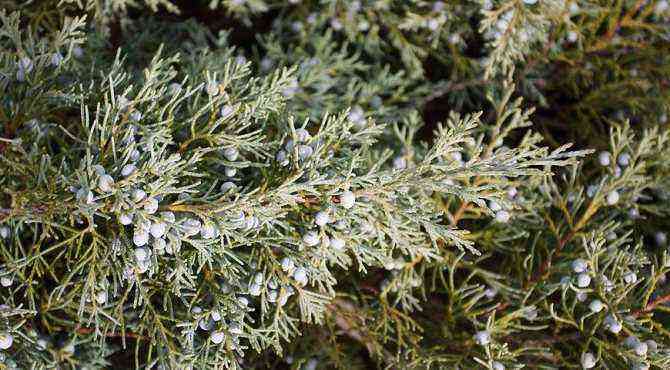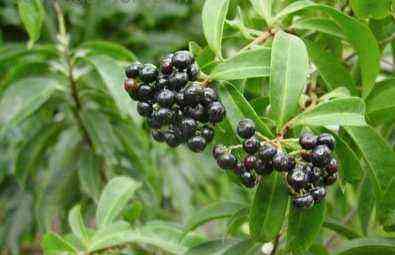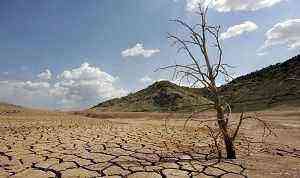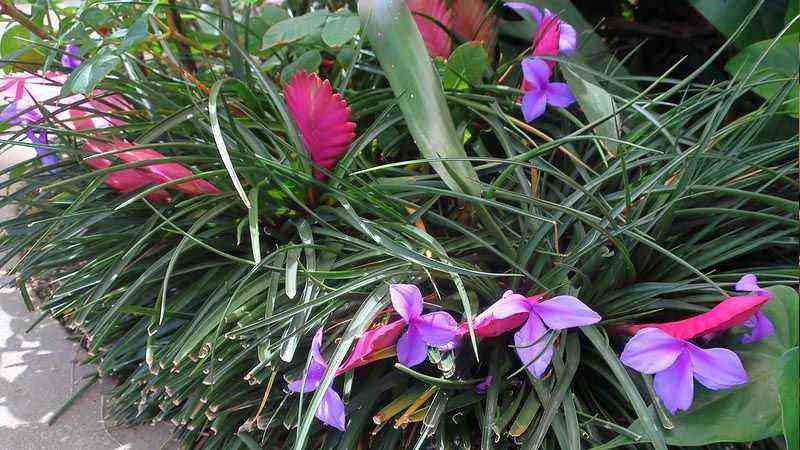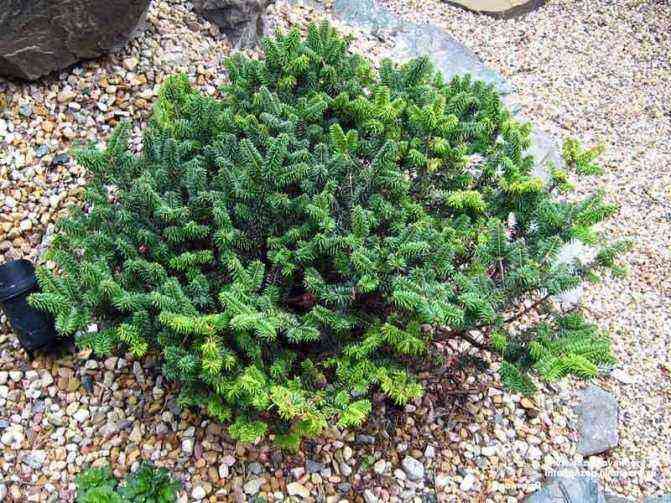Feeding pepper seedlings at home – how to grow healthy seedlings?
Optimal feeding of pepper seedlings at home at the primary stage of culture development is necessary to obtain healthy and strong sprouts. It is important to know what fertilizers to apply when feeding seedlings, so as not to harm the plant, but to benefit the future harvest.
Top dressing of pepper seedlings
When asked whether it is necessary to feed pepper seedlings, experienced gardeners give a positive answer. Plants that have received all the necessary trace elements at the initial stage of development form a powerful root system and are able to adapt to an unfavorable external environment in the future. Farmers do not recommend overfeeding pepper seedlings. For example, an excess of nitrogen leads to an increase in green mass, but such lush bushes will not bring a rich harvest. Correct introduction of the necessary useful elements in due time guarantees a harvest from juicy large vegetables.
How to feed pepper seedlings at home?
The best food for pepper seedlings at home should contain nitrogen, phosphorus and potassium. Calcium (for fruit decoration) is used in small doses at this time of culture development. It can be applied to an open area in the form of crushed eggshells. Nitrogen is needed to build up green mass and strengthen the stem, phosphorus – to form a powerful rhizome. Feeding pepper seedlings at home can be done with complex mineral fertilizers, mixed compositions. If you do not want to use chemistry, it is advisable to use folk remedies.
Feeding pepper seedlings with yeast
Experienced gardeners know about the benefits of yeast for improving plant development and increasing yields. They contain potassium and manganese, nitrogen and copper. When watering seedlings at home with such a solution, the survival rate of seedlings is improved, stress during transplanting is minimized, ripening times are reduced and the quality of fruits improves. The first time feeding pepper seedlings at home with yeast is carried out 10-14 days after the pick. Subsequent feeding is done 7-10 days after the pepper is touched in the open ground. The third time is fertilized at the time of budding.
Feeding pepper seedlings with yeast – recipes:
- In 1 glass of water, dilute 10 g of dry yeast and 2 tbsp. tablespoons of sugar. Leave the mixture for 2 hours, then pour it into a 10 liter bucket of water. From such a feeding, after 3 days, the leaves will acquire a rich color and gloss.
- Dilute a pack of live yeast in 10 liters of warm water, leave for 100 hours. Before watering, dilute the composition with water 1: 5.
Feeding pepper seedlings with ash
Organic compounds work well on the progression of seedlings, wood ash is considered one of the best. It contains potassium, phosphorus, magnesium, iron, sulfur, zinc, easily assimilated by plants. The product helps to strengthen the immunity of sprouts, reduces the risk of fungal ailments. However, this make-up must not be mixed with formulations containing nitrogen. Top dressing of pepper seedlings with ash – the correct proportions:
- 1st option: 1 tbsp. mix a spoonful of ash with 2 liters of water.
- 2nd option: mix 300 g of nettle infusion with 200 g of wood ash and dilute with 10 liters of water.
The solution is infused for 3-5 days, filtered and used for watering plants (at the root of 100 ml). It is better to recharge peppers in the morning. Ash can be used as an ingredient for potting soil when planting seeds, or as an independent fertilizer. The introduction of wood ash should be alternated with the use of complex fertilizers.
Fertilizing pepper seedlings with hydrogen peroxide
Many do not know that feeding young pepper seedlings at home with hydrogen peroxide enhances the growth of seedlings. The product contains atomic oxygen, which oxidizes the soil and kills pathogenic bacteria. When deciding how to feed the seedlings of peppers with hydrogen peroxide, you just need to know the correct proportions of the solution – 2 tbsp. tablespoons of 3% peroxide per 1 liter of water. The tool can be used for watering plants and for spraying them. Even constant moistening of the seedlings with a peroxide solution is allowed. The seedlings begin to grow actively and noticeably overtake the seedlings watered with plain water.
Pepper seedlings feeding schedule
It is important to know when to start feeding pepper seedlings at home. Young plants are fed 3 times before planting in the ground (no more than once every 10 days). Fertilizing pepper seedlings at home:
- First, the seedlings are fed after the first 2-3 leaves have pecked on them (10 days after germination).
- The second time the seedlings are fertilized 2-3 weeks after the dive.
- The last recharge is planned a few days before the seedlings are planted in the ground.
The first feeding of pepper seedlings at home
The very first feeding of pepper seedlings after germination is aimed at forming a good root system, should give an impetus for the development of the plant stem and the first leaves. It is produced with nitrogen-phosphorus fertilizers at home, one of the following compositions:
- Complex mineral fertilizer “Kemira Lux”, dilute 20 g of the drug in 20 liters of water, add under the roots of the plant.
- Mixed mineral fertilizer: 2 teaspoons of ammonium nitrate, 3 teaspoons of superphosphate, 3 teaspoons of potassium sulfate for 1 bucket of water.
- For 10 liters of water, 5-7 g of urea and 30 g of superphosphate are diluted.
How to feed pepper seedlings after a pick?
Transplanting sprouts into separate pots is performed 10 days after their initial feeding. After that, you need to wait 2 weeks, since the roots are damaged during the procedure, and fertilization will bring them even more stress. Then, a secondary feeding of pepper seedlings is carried out after a pick, aimed at the formation of a leaf cover of the culture and a powerful root system. It should be carried out at the stage of 5 true leaves in the plant, contain an increased dose of mineral mixtures, supplemented with phosphorus, potassium, macro- and microelements.
One copy should use 100 ml of working solution. It is advised to nourish the seedlings after watering on a wet substrate. For fertilization at home, you can use:
- Same formulations as for primary make-up with double dose.
- “Kristalon” green – 20 g of the mixture per 10 liters of water.
- “Kemira lux” – 30 g per 10 liters of water.
- Mineral mixture: 80 g of superphosphate, 30 g of potassium salt per 10 liters of water.
- Fertilizer mixture: 10 g of potassium sulfate, 10 g of urea and 60 g of superphosphate per 10 liters of water.
- During the same period, it is advisable to use yeast.
The last time the seedlings are fertilized at home before planting in the soil to increase their resistance to the environment. To do this, you will need: 50 g of superphosphate and 20-30 g of potassium salt, diluted in 10 liters of water. Ready-made store mixes of nitroammofosk or Agricola, diluted according to the instructions, will help prepare the seedlings for planting on the site. After such feeding at home, the pepper will grow fruitfully and give a rich harvest.
Top dressing of pepper seedlings
Pepper is a rather capricious culture. Not everyone even succeeds in achieving germination, not to mention a good harvest. But many people successfully grow peppers in different regions – how do they do it? The secret is in strong seedlings, which are obtained thanks to high-quality feeding. How to feed pepper seedlings after picking will be described in detail in this article.
What are the branded fertilizers?
Thanks to top dressing, the pepper after the pick becomes persistent and strong, despite further transplantation into open ground, natural disasters. They are also less susceptible to disease and pests. Depending on what kind of feeding on the account is made, certain means are used. It is important to note that after picking, at least 10 days must pass before the first fertilization.
The first feeding is necessary so that the plant develops a horse system and does not stretch too much. So, what is the first time to feed pepper seedlings after a pick?
Fertilizers for pepper seedlings
- «Potassium nitrate“Is the most popular and simplest method. For 10 liters of water, take 30 g of nitrate.
- «Kemira Lux“- a well-known remedy, appreciated for its effectiveness. Applied 20 g per 10 liters of water.
- «TIRES Kuznetsova»- concentrated substance. Take 2 teaspoons in a bucket of water (12 liters).
- Mineral fertilizer is made independently from a number of substances purchased from a garden store. 6 liters of water, 1,5 tsp. potassium sulfate, 1 tsp. ammonium nitrate and 1,5 tsp. superphosphate gets in the way and an excellent feeding is obtained.
The second feeding assumes increased growth and development. It is carried out when 5 leaves have already appeared on the sprout.
- «Crystalon»Used when diluting 20 grams per bucket of water (12 liters).
- «Kemira Lux“- all the same means, but for other purposes. For this, gardeners love him – complexity. This time you need to take 30 g per 12 liters of water.
- «Orton Micro Fe“,”Aquadon micro»Are also recommended for use.
The third feeding is carried out as a last resort if the plants are growing slowly. For this, complex fertilizers are used: “Uniflor-growth”, “Nitroammofoska”, “Agricola”, “Gomel Fertilizer”. If the seedlings grow too slowly, instead of these means, it is better to fertilize the soil with “Ideal” or a solution of urea at the rate of 1 tsp. for 6 liters of water.
Top dressing of pepper seedlings with folk remedies
The question of how to feed pepper seedlings after a pick worries adherents of folk methods. So what helps besides chemistry?
Top dressing of pepper seedlings with folk remedies
- Nettle infusion is made in a combination of 1:10. A little ash is poured into the resulting mixture. The use strengthens and promotes the development of the root system.
- Dry, used tea leaves (0,5 cups) are filled with a liter of hot water. After 5 days, the infusion is filtered and used for irrigation without diluting with water. Such feeding will significantly enhance the growth and development of seedlings.
- The third common type of fertilizer is ash. It is mixed with water (100 g per 10 liters) and left overnight. During this time, she will saturate the water with useful substances. In the morning, you need to shake the mixture and water the plants so that the ash gets directly into the pots.
- You should not give up on husk fertilization. To prepare the infusion, 10 grams of husk is poured with 3 liters of warm water. After 3 days, the infusion is filtered.
- Banana peel contains a lot of potassium, which is essential for pepper seedlings. It is used in different ways. Can be burned into ash and added to water, dried, crushed and added to water again. If you don’t want to mess with the peel, you can simply cut it and put it in the ground next to the seedlings.
Traditional methods can be used regardless of what kind of feeding is done.
How often to feed peppers?
Popular varieties of pepper
Pepper seedlings are fed two or three times – no more! The first time it is done 10 days after the pick, and the second – 2 weeks after the first.
Before feeding the pepper seedlings after diving for the third time, the necessary means for enhanced growth or development is selected. It can be one of the above or something else. Watering the sprouts with fertilizer is carried out no earlier than 4 days before planting in open ground.
What do experts advise?
- It is not recommended to use manure as fertilizer. Even strongly diluted, it is hardly tolerated by seedlings. It will only hurt.
- After the pick, at least 2 weeks must pass before the first feeding.
- Top dressing is used in the form of solutions at room temperature.
- As in the case of watering, the top dressing should not get on the leaves and stem of the plant. If this happens, it is advisable to pour a little water on top of it to wash off the fertilizer. The fact is that some top dressing can lead to yellowing of the leaves or even their fall off upon direct contact.
Top dressing for seedlings of peppers and tomatoes: briefly about the most important condition for yield
Vegetable crops are often grown in seedlings at home in advance by many summer residents. But even during this period, they need to be properly looked after, fed for the growth and thickness of the sprout. Crops are grown not only in summer cottages, but also on window sills and balconies.
First you need to decide on the seeds, properly prepare them for sowing in order to get strong seedlings. Correct feeding is also important here. It should be remembered that peppers and tomatoes are thermophilic crops that grow well in nutritious soil and do not tolerate drought.
Top dressing for tomato seedlings
Tomatoes need feeding so that the stem of the seedling grows and is thick. If the seedlings are grown at home, then top dressing should be mandatory, since tomatoes need nutrients from the soil. The first time fertilizers are applied after the appearance of full-fledged 2-3 leaves, the second time – 14 days after the pick. Before transplanting tomato seedlings into open ground or a greenhouse, they need to be fed 10 days earlier.
The first feeding is carried out with complex fertilizers with a high nitrogen content. An excellent nutritional mixture will be prepared with your own hands: 1.5 g – potassium salt, 0.5 g – urea, 4 g – superphosphate. Mix everything and dissolve in 1 liter of water. Urea is great as a second feeding.
Top dressing for pepper seedlings
Pepper seedlings can be called unpredictable when grown. According to the observations of vegetable growers, the reason for the sudden wilting may be a lack of feeding. Fertilization should be complex – nitrogen, so that the stem is green, phosphorus, so that the root system is strong, potassium. If the seedlings are already planted in the ground, then it will be enough just to water it with mineral fertilizer.
Top dressing is distinguished between root and foliar. The first is applied at the root, the second is sprayed with a spray bottle. The root is introduced first, so that the root system develops well.
Often tomatoes and peppers for growth and thickness are fertilized with manure diluted in a ratio of 1 bucket of manure to 3 buckets of water. This composition must be insisted for a day, then water each bush with it. Cultures are also fed with yeast.
How to feed pepper seedlings so that they are plump
For the development of plants, not only light, water and carbon dioxide of the soil are needed. To ensure the normal functioning of the seedlings, nutritious mineral elements must be used in the care of the seedlings.
What kind of feeding does pepper seedlings need: signs
A large number of components of the periodic table are present in the earth. But these minerals are not always enough for development, therefore, when growing seedlings, fertilizers are necessarily applied to the soil.
About what elements the plant lacks, the seedlings themselves are able to “prompt”. And the gardener must learn to recognize these signs.
Features of deviation of minerals from the norm – Table 1
* The elements indicated in the table before manganese are used in large quantities when feeding seedlings.
All others (from Mn to Zn) are trace elements that are not always used to feed seedlings. They are introduced as needed (in small doses) – with a pronounced deficit.
Having determined by the appearance of the plant, which nutrient the seedlings are missing, they use top dressing in the form of monofertilizer – with the participation of one active element.
In case of an overabundance of any of the elements, the introduction of any additional power supply is temporarily stopped.
Feeding rules
The above table 1 shows that the development of seedlings is influenced not only by the deficiency of chemical elements, but also by their overabundance, as well as by their combination. Therefore, when growing peppers, you need to maintain the proportions of the fertilizers applied.
But this is not the only rule to be followed:
- top dressing is selected based on the phase of seedling development;
- using ready-made fertilizers, pay attention to the chemical composition;
Some drugs cannot be combined with each other. For example, a mixture of superphosphate with calcium nitrate causes the formation of compounds inaccessible to plants.
- microfertilizers are undesirable to use at cool temperatures and in cloudy weather – even being in a greenhouse, seedlings poorly absorb nutrients on such days;
- mineral fertilizers are applied under the roots only in dissolved form; for this, slightly mineralized water is used; it is better to take rain or thawed, warmed up to room temperature;
- if the solution accidentally gets on the leaves, you must immediately wash them with warm water, otherwise a burn will appear on the plate;
- additional nutrition of seedlings is combined with watering (with the obligatory loosening of the soil); while irrigation is carried out before fertilization;
- apply dressing taking into account the biological clock of the plant – the morning hours are considered the best period, so that by the evening (when the temperature drops) the soil has time to dry out a little; this will avoid the development of fungal diseases.
When picking, you cannot immediately apply fertilizer to the soil – the seedlings need time to adapt and root. And top dressing will stimulate seedlings for active growth, which will lead to thin and highly elongated shoots. The same can be said for transplanting seedlings to a permanent location.
Feeding pepper seedlings at home
Peppers in the seedling stage are usually fed twice – in the phase of 3-4 true leaves and after the appearance of the 6th. But here you need to take into account such a factor as picking, which is carried out when the first pair of leaves appears. If this procedure was carried out, then the first fertilization is carried out 2 weeks after transplanting seedlings.
Many gardeners initially sow seeds in separate containers. If special soil enriched with minerals was used for sowing, then the peppers do not need early feeding. When sowing in ordinary soil, the second pair of true leaves is waited for and the first fertilizers are applied.
After 2 weeks, the procedure is repeated using the same composition of components. Usually, a complex mineral mixture is used for seedlings at the rate of 50 g per bucket of water. In this case, the phosphorus component should be 3 times more than the nitrogen one.
An example of the composition of a mineral fertilizer:
- ammonium nitrate – 0,5 g;
- potassium – 1 g;
- superphosphate – 3 g.
The amount of ingredients is taken per 1 liter of warm water. This composition can be replaced with a mixture of potassium humate (2,5 ml) with urea (0,5 tsp).
The third feeding of pepper seedlings is also practiced, which is performed 3-3 days before the transfer of the bushes to a permanent place. In this case, the already familiar composition is used, but in it the dose of potassium components should be increased to 5 g.
Top dressing options
Gardeners are offered a large selection of ready-made preparations used for fertilizing seedlings. Someone may not be able to afford them, so there is an alternative – home remedies. But a greater effect can be achieved by combining mineral feeding with organic matter (excluding fresh manure – it is dangerous for peppers).
Ready-made preparations
When choosing mineral fertilizers, it is better to follow the principle – do not overdo it. An overabundance of elements will harm more than a lack of it.
It is recommended to choose ready-made liquid formulations marked “for seedlings”. If a powder preparation is used, clearly maintain the concentration.
Recommended fertilizers – Table 2
| Name | appointment | Usage (based on 1 liter of water) |
| Ideal | Provides resistance to stress and disease. Stimulates root development | For the 1st feeding, take 0,5 ml. For the 2nd, the dose is doubled |
| TIRES Kuznetsova | Sodium is added to the main macronutrients, which makes the product a powerful growth stimulant with an additional anti-stress effect. | Dilute 1 g of the drug |
| Kemira-Lux | Specialized composition for seedlings | For the 1st feeding take 1 g, for the second – 3 g |
| Crystalon* | Helps Form Roots and Stimulates Seedling Growth | Applied only for the 2nd feeding in the amount of 2 g |
| Orton Micro Fe | Contains a large composition of trace elements, which helps to establish photosynthesis of the plant and increase immunity | Take 1 g to spray the seedlings with a solution in the 1st feeding |
* Kristalon is produced in 3 versions:
- blue powder is used when growing seedlings under artificial lighting;
- white is suitable where backlighting is not used;
- red prevents seedlings from stretching in cloudy weather.
Using universal means, it should be borne in mind that the dosage of the drug for feeding seedlings is taken 2 times less than for an adult bush.
Folk remedies
Those who prefer environmentally friendly products can choose natural ingredients as a fertilizer, as an alternative to chemicals:
- infusion of nettle (100 ml of chopped grass) in combination with wood ash (30 g) per 1 liter of water;
- onion tincture – 20 g of husk insist 4 days in 5 liters;
- banana peel (from 2 fruits to 3 liters of water) is aged for 3 days;
- eggshells are filled in a glass container by 1/3 and filled with water; the infusion will be ready for use as soon as the smell of hydrogen sulfide appears;
- collecting the drained tea leaves (1 glass), pour 3 liters of water, leave for 5 days.
All described tinctures must be filtered before use. The remaining sediment can be sent to the compost heap.
Wellness feeding
There are folk remedies that ensure not only the normal growth of seedlings, but also increase the immunity of plants, protecting them from diseases:
- iodine gives good results – a couple of drops of the drug are dissolved in 1 liter of water; an additive in the form of milk whey (100 ml) will enhance the effect;
- the ideal option is “live” yeast (100 g per 3 l of water); to make fermentation more active, sugar (125 g) is added to the jar; when the infusion is ready, 1 tbsp. diluted in 1 liter of water and water the seedlings with this concentration.
Iodine and yeast are good because such feeding stimulates seedlings to form a large number of ovaries.
Top dressing of pepper seedlings after transplanting to a permanent place
Seedlings for a permanent place are determined when it grows up to 25 cm and will have at least 8 true leaves on the bush. As mentioned above, seedlings are fertilized a few days before transplanting. This will allow the plants to cope with stress more easily.
But in the future, the bushes need additional nutrition, especially during the most crucial periods of the growing season – when laying buds, flowering, fruiting. It does not matter in what conditions the peppers will be grown (in an open garden or greenhouse) – the proportional ratio of trace elements remains the same.
But the total dosage should be different. On the shelves of the cultivation facility, where the volume of soil is limited, the frequency of fertilization is higher than when growing in the open version.
On average, peppers are fed 3-4 times per season.
In this case, it is recommended to use the following proportional ratios:
Top dressing of pepper bushes in the greenhouse – Table 3
| Quantity depending on the phase, g (per 10 l of water) | |||
| 10 days after landing | at the first ovaries | during fruiting | |
| Urea | 10 | 20 | 20 |
| Simple superphosphate (double) | 50 (25) | 80 (30-40) | 40 (20) |
| Potassium sulfate | 15 | 25 | 30 |
In the open field, you can not get attached to the phases of development, using mainly potash and phosphorus fertilizers.
How and when to feed pepper seedlings – video
How to feed peppers in the open field – video
Top dressing is a prerequisite for caring for seedlings and adult plants. Subject to the basic rules, the seedlings are strong, thick, moderately elongated.
Timely applied fertilizers increase the immunity of the bushes and ensure their resistance to stress. At the same time, it is necessary to maintain the basic modes of growing seedlings – irrigation, temperature, and also provide a sufficient amount of light.
Top dressing of pepper seedlings at home: how to fertilize the seedlings so that they are plump.
It is possible for everyone to grow a beautiful tasty pepper in their garden, however, if only the correct seedlings were first grown. Correct, this is when they chose good seeds, bought or mixed good soil on their own, and from the moment the first shoots appeared and until the young plants were planted in open ground, fertilizers were applied in time and in the right amount. About when, with what, how to fertilize the planting and the conversation will go.
How to properly feed pepper seedlings
If anyone thinks that feeding pepper seedlings at home is a simple and “irresponsible” procedure, he is greatly mistaken. Incorrectly or inappropriately applied fertilizers, at best, will slow down the growth of plants, at worst, they will lead to their death. Therefore, all that is needed must be done according to the rules.
First. Peppers are fed with strong chemical fertilizers a maximum of 3 times.
Second. Organic matter is used as an additional, not the main source of nutrients and not more often than once every 2 weeks.
The third. The introduction of minerals is combined with irrigation, that is, first fertilization, then clean water.
Fourth. The solutions are added in the morning, after the planting “woke up”, and there is a warm day ahead. Evening watering at falling temperatures can provoke disease.
The fifth. Foliar dressing is allowed, but only for already mature plants before planting in open ground.
Solutions should be at room temperature, from cold, both growth arrest and the appearance of diseases are possible. Before feeding, if a hard crust has formed on the surface, the soil is slightly fluffed. The solutions are poured gently directly under the root, the drops that have fallen on the leaves are washed off with clean water.
Top dressing of pepper with an electric sprayer: video
How to feed pepper shoots
At the very beginning, when the first shoots are just beginning to appear above the ground, you need to decide how to feed the seedlings of peppers so that there are plump future plants. For good growth, the plantings must receive nitrogen. For the development of the root system and the aboveground part – phosphorus. Potassium makes seedlings little susceptible to all negative environmental manifestations and diseases. But there is a nuance. If the seeds were planted in a store substrate, in which all the microelements necessary for the first time have already been laid, no fertilizer is applied until the pick. In the soil of their own preparation, seedlings are fed after about 2 weeks, when there are 2 true leaves.
The first top dressing, however, like all the others, may contain substances that are different in name, but the same in the presence of trace elements. For example, several recipes, but you only need to use one.
Recipe 1
– urea – 6 g;
– superphosphate – 25 g;
– water – 10 liters.
Recipe 2
– ammonium nitrate – 10 g;
– superphosphate – 25 g;
– water – 10 liters.
Recipe 3
– superphosphate – 25 g;
– mullein solution – 1 l;
– water – 10 liters.
The mullein solution is poured only into the fermented. Organic matter (1 part) is poured with water (20 parts), left for about a week for fermentation, and only after that is used. For convenience, in order not to mix several fertilizers, you can take one complex for vegetables. It can be Fertika, Kemira or any other. During the first feeding, the concentration of the complex fertilizer solution is reduced by 2 times from that recommended by the manufacturer.
How to feed pepper seedlings a second time
The second feeding of pepper seedlings at home will not be needed immediately after transplantation. The plants must first get used to the new location and take root a little. After about 2 weeks, at this time there are already 4 real leaves, one of the above fertilizers plus potassium is applied under the seedlings.
Recipe 1
– urea – 5 g;
– superphosphate – 35 g;
– potassium salt – 15 g;
– water – 10 liters.
Recipe 2
– ammonium nitrate – 10 g;
– superphosphate – 35 g;
– potassium sulfate – 20 g;
– water – 10 liters.
During the second feeding, a little less nitrogen is added, since strong growth is no longer necessary. For a better build-up of green mass and the formation of a powerful root system, more phosphorus is laid. Fertilization rules remain the same.
The second feeding of pepper: video
How to feed pepper seedlings for the third time
Shortly before planting in open ground, about 4-6 days, the seedlings are fed a third time. Fertilizers are used the same, but potassium is added 8 grams more. Of the complex, “Kristalon”, “Agricola” or “Uniflor Grow” are suitable. The last feeding “saturates” the plants with microelements for better survival rate of seedlings in the beds.
Natural fertilizers for pepper seedlings
When deciding how to feed the seedlings of peppers so that they are plump, which means strong trunks of the bush, one should not forget about natural fertilizers. Chemistry is chemistry, and folk remedies sometimes help better. What harmless products can be used to strengthen plantings?
A universal substance for growing vegetables in all respects. Phosphorus, potassium, calcium and a number of other trace elements in an easily assimilated form are very important for growing seedlings. Pepper is fertilized with ash, both at the root and on the leaf. In the second case, only before transplanting to the beds. For root feeding, 1 liter of sifted ash is poured in a bucket of warm water in the evening. In the morning, half a glass of infusion is poured under each plant. For feeding on a sheet for 10 liters of ash water, take 1 glass. By the way, ash is sold in stores as fertilizer. This is for those who live in apartments.
Banana peel
Another “supplier” of potassium, and from waste. The recipe is simple, you just need to wait. The peel of 2-3 medium-sized bananas is poured with warm water (3 liters), insisted for 3-4 days. The infusion is shaken, filtered. For the entire period of growing seedlings, 2 banana dressings are enough.
A two-in-one tool. On the one hand, it protects plantings from diseases. On the other hand, it increases the number of ovaries. To obtain “iodized” fertilizer, 3 drops of iodine are diluted in 2 liters of water. You do not need to insist.
They are used, of course, not in their pure form, but in a diluted brew. Whoever dealt with moonshine, the initial process is the same, but in miniature. A small pack (3 g) of fresh yeast is diluted in 100 liters of water, half a glass of sugar is added, and left to ferment. Then 1 tbsp. a spoonful of mash is diluted in 1 liter of water, the dressing is ready.
Fertilizer from the same eggshell is also useful both for growing seedlings and for peppers already in the beds. For young plants, an infusion of shells is used at home, powder is scattered on the beds.
To whom the proposed minerals and organics are not enough, they can feed the seedlings with something else, there are plenty of options, thanks to the producers. According to reviews, some gardeners do not use chemistry for pepper seedlings at all. But you need to be able to, and for a start, the combination of natural and mineral will be the most correct decision.
Share useful information:
How to feed tomato and pepper seedlings: folk remedies and fertilizers
Vegetables can be nutrient deficient throughout the growing season, even if planted in a fertilized substrate. Especially dangerous is “starvation” of immature sprouts and young seedlings. We will figure out how to properly fertilize peppers and seedlings, what purchased preparations are suitable for nightshades and describe effective folk methods.
General recommendations
Excess and shortage of certain elements equally badly affect the development of vegetable crops.
Basic rules for feeding immature seedlings of peppers and tomatoes:
- Compliance with the dose. Frequent feeding, exceeding the concentration can harm the sprouts.
- The priority is liquid consistencies. Nutrient components will be delivered to the roots only after they are dissolved in water.
- Combination with watering. Peppers and tomatoes must be well moistened before adding preparations.
- Loosening the soil. The fluffed soil is quickly saturated with fertilizers, which means that useful elements will sooner penetrate the root system.
Important! Before using the finished product, be sure to check its purpose. If the product is designed to fertilize adult plants, then for seedlings its concentration should be halved.
Trace Elements
Fertilizer for tomato and pepper seedlings should be balanced. The correct growth of nightshade crops requires a competent balance of the following elements:
- Nitrogen. Its task is to build up green mass. The main symptom of a micronutrient deficiency is slow stem growth.
- Phosphorus. Provides an abundance of peduncles, a lot of fruits. The disadvantage is manifested by the falling off of the ovary, the appearance of reddish veins on the leaves of tomatoes and peppers.
- Potassium. Strengthens young roots, helps seedlings to take root in a new place.
Balanced feeding is needed for seedlings only when the first signs of mineral deficiency appear. For fertilization, you can prepare the composition: 0,5 g of ammonium nitrate, 3 g of superphosphate, 1 g of potassium. Calculation of components per 1 liter of water.
Agro-preparations
When choosing how to feed homemade tomato and pepper seedlings, you should pay attention to the range of gardening shops. To enrich vegetable plantings and stimulate growth, the following preparations are perfect:
Soluble fertilizer for seedlings, produced in various forms. Top dressing includes humates, natural stimulants and essential elements.
The recommended dosage is 2 tablespoons (5 ml each) of the drug per bucket of water. The first “feeding” of tomatoes and peppers is carried out with the appearance of two leaves, the second – before picking, and then – twice a month before the appearance of ovaries.
The active component of the drug is biohymus. A universal remedy for activating the rooting of cuttings, fast germination of seeds, rooting of sprouts, strengthening the plant, intensive fruiting, ensuring a bountiful harvest.
Additive “Ideal” is enriched with macro- and microelements, the drug can be applied by root and non-root methods. The dosage for root application is 8-10 ml / 1 l of water.
Important! Ideal should not be used more than once a week. Spraying is carried out until the buds appear.
Seedling growth biostimulant, supplied in ampoules, the contents must be diluted with water. The anti-stress drug increases the protection of young shoots from temperature extremes, diseases and pest attacks.
“Epin” is more often used as a foliar feeding for seedlings and peppers when three leaves appear. The estimated dose is 5 drops per 0,5 l of water.
Traditional recipes
When asked how to feed pepper seedlings for growth and proper development, many summer residents advise using natural stimulants prepared on their own.
We list the effective folk remedies:
Lukovaâ Husk
Onion tincture enriches the soil and is a natural disinfectant. Pour 30 g of husk with 5,5 liters of water, leave for 3 days. Can be used for regular irrigation of seedlings.
Bird droppings
A storehouse of nitrogen that promotes the growth of green mass. The solution must be prepared in advance, as it must stand for at least 10 days. Composition: 1 l of water + 100 g of droppings. Before use, potassium permanganate must be added to the slurry, it can be replaced with copper sulfate.
Banana peel
The fruit is rich in potassium – the element improves the absorption of nitrogen. Banana recipe: pour the skins of 4 fruits with water. After three days, the solution is ready for use – it is applied under the root of the plant.
Eggshell
A natural complex fertilizer with many irreplaceable ingredients is obtained from raw materials – this is how to feed the seedlings of peppers after picking. Put waste from 5 eggs in a jar (3 l), fill with water. After 3 days, the nutrient infusion is ready for watering.
The unique properties of ash reduce acidity, ash nourishes plants, strengthens young seedlings. Dry ash is added when diving seedlings, and diluted top dressing with ash is used after planting in the ground. Preparation of the composition: 1 l of water + 100 g of ash.
Concentrated nitrogen-containing fertilizer (urea), used to prepare the soil before planting seedlings in the ground, is applied in powder form 12 g / sq. m. Liquid concentrate is used before flowering – 60 g / 10 l.
Solanaceous crops respond well to the addition of a couple of iodized drops to irrigation water. Top dressing gives an impetus to growth, protects against pests.
Маргацовка
Helps prevent manganese deficiency. The lack of an element is fraught with brown spotting of the grown fruits. Foliar dressing is carried out – 2 g of potassium permanganate is enough for a bucket of water.
Ammonia
Ammonia is a source of nitrogenous compounds, the dosage of the nutrient composition is 10 liters of water + 1 tbsp. l. alcohol. The ammonia repels pests, but its use is advisable only when there is a lack of nitrogen.
Nitroammophoska
It is better to pre-dilute granular fertilizer in water and use it for irrigation. The tool helps to have plump stems, increases the size of the ovary.
Nitroammofosku can be combined with manure, sodium humate.
Hydrogen peroxide
The treatment strengthens the roots, the immunity of the ground part, and disinfects the root zone. Hydrogen peroxide can be sprayed on plants or watered. Preparation – 20 g of peroxide per bucket of water.
Solution for improving growth: 1 liter of milk composition, 10 liters of water, 20 drops of iodine. Suitable for feeding seedlings, adult crops.
Important! Care should be taken to use yeast, strong tea leaves. The former actively absorb potassium, and the latter contain tannins that block the growth of nightshade roots
Nutrient Application Scheme
Top dressing of tomato and pepper seedlings at home is performed at regular intervals. The dosage and choice of fertilizer are selected depending on the growing season.
First feeding
The first fertilization is necessary after the appearance of two leaves. At this stage of growth, it is important not to overdo it. Grounds The task of fertilization is to strengthen the roots of the sprouts.
- nitrophoska – 15 g of the drug per liter of water;
- watering with a weak copper concentrate;
- irrigation with infusion of onion peel, egg shell or banana.
Top dressing is carried out every 10 days, alternating the composition of fertilizers. To strengthen young shoots, succinic acid can be added to the irrigation water.
After the picks
Tomato and pepper seedlings need strengthening after picking. At this stage, a one-time application under the root of the yeast emulsion is permissible. She feeds immature plants with phosphorus and nitrogen. To minimize the loss of potassium, this microelement is added simultaneously with the yeast feeding.
Any type of baker’s yeast can be used to create a nutritional mix. Prescription option: knead a piece of soft yeast (100 g) in a bucket of liquid, stir and leave for 24 hours. To increase efficiency, the concentrate is enriched with hops, bird droppings.
How else to feed pepper and tomato seedlings at home? Possible options:
- 12 days after the pick – nitroammophos;
- after another 2 weeks – with potassium suprophosphate or sulfate (1 tbsp. l. preparation + 10 l of water);
- the last top dressing before planting is nitrophoska of a weak consistency.
After landing in the ground
The soil for transplanting tomato and pepper seedlings should first be enriched with wood ash and disinfected with a weak solution of potassium permanganate. After planting, the seedlings should be given time to adapt. You can start feeding in 2 weeks.
The choice of drugs depends on the weather conditions of the season. With a dry summer, potassium must be abandoned – an excess of the element can provoke illness. The abundance of rain is a reason to use potassium fertilization.
After adaptation, it is advisable to enrich the soil with phosphorus-potassium compounds to accelerate growth, active budding, and fruit shaping. It is better to refrain from using nitrogen supplements.
Plants themselves suggest what substances they lack. It is necessary to carefully examine the seedlings and adjust agrotechnical methods when the first alarming symptoms appear.
What can be alarming:
- lightening of leaves – nitrogen deficiency;
- the appearance of whitish stripes along the veins – iron deficiency;
- wilting foliage – magnesium deficiency;
- purple veins on the leaf plate – lack of phosphorus.
If the listed signs are identified, a therapeutic feeding is carried out, regardless of the vegetation period of the plant.
Feeding seedlings and peppers with folk remedies can completely replace purchased complex preparations. It is important to adhere to a sense of proportion and not try all the methods at once on vegetable plantations.
